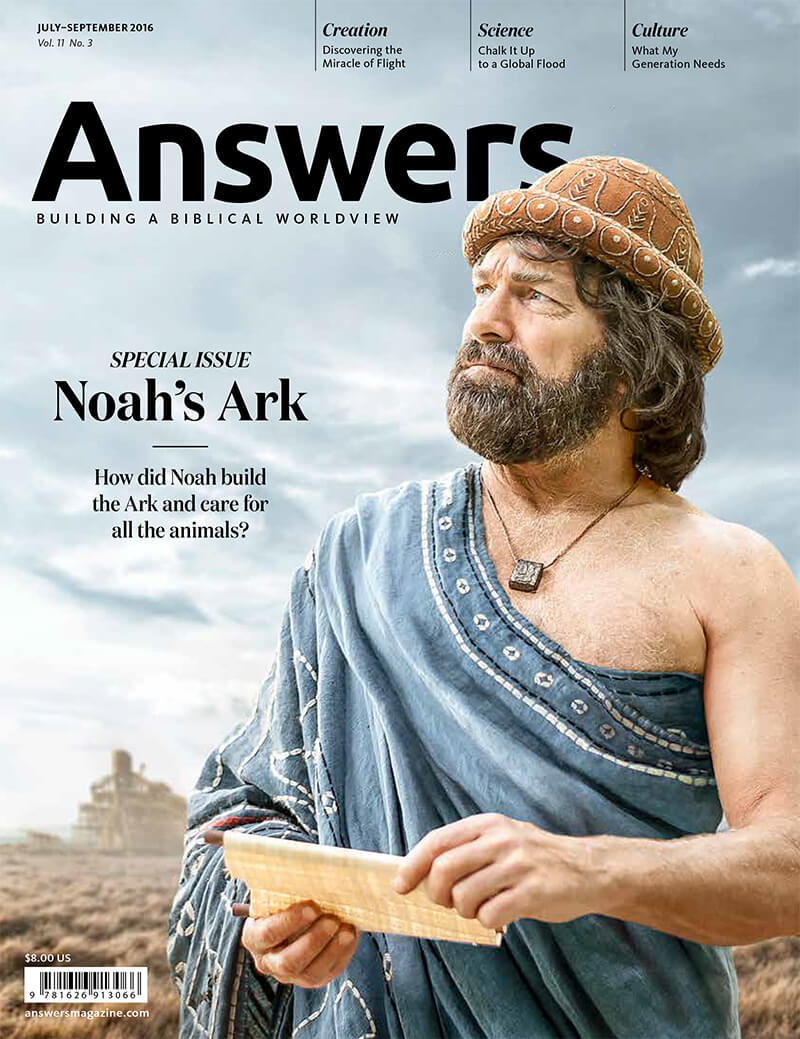A Fishy Source for Sunscreen
Creation on Display: Experiment
A fish with sunburn? Not a chance! God provided a wash-free, eco-friendly sunscreen we hope to imitate.
Have you ever seen a sunburned fish?
When you visit the beach, you can smear greasy sunscreen all over your body to protect your skin from the sun’s harmful ultraviolet rays. (Then the ocean water washes the lotion off and you get burned anyway, but that’s another story.) The poor little zebrafish, which lives in shallow water, doesn’t have that option.
All day it’s exposed to ultraviolet rays. If it gets burned, it doesn’t have a bottle of aloe vera lotion waiting in the hotel room, ready to soothe the pain.
But God didn’t forget the zebrafish. He gave it special protection that human beings may soon be using. More on that later. First, why do living things need protection from the sun’s life-giving energy, anyway?
We all enjoy the light and the tan, but energy from the sun comes in different intensities at the same time: radio waves, microwaves, infrared, visible light, ultraviolet, x-rays, and gamma rays. The last three are the most penetrating and energetic—meaning they’re dangerous.
The earth’s atmosphere protects us from their most deadly effects, but some ultraviolet sunlight (UV) still reaches the earth’s surface in two varieties (conveniently labeled A and B). UVA penetrates more deeply into the skin and can cause wrinkling and aging. UVB reddens the surface and causes sunburn. Both can cause skin cancer. Sunscreen and sunblock lotions provide a healthy barrier against these UV rays, but how do they work?
If you read the label on a bottle of sunscreen, you’ll see an impressive array of chemicals. Some products contain the inorganic compounds zinc oxide and titanium oxide, which reflect UV directly away from the skin. Most also include organic molecules, which absorb the UV. But commercial skin applications aren’t perfect. They can be greasy, they often wash off, and the chemicals in them sometimes cause allergic reactions or irritate the skin.
That’s where the zebrafish comes in. It makes its own sunscreen internally, an organic compound called gadusol (C8H12O6) that efficiently filters ultraviolet light. Researchers are studying ways to make synthetic gadusol in large enough quantities for commercial production. Their research may even lead to a sunscreen pill—no muss, no fuss, and it wouldn’t wash off in the ocean.
The zebrafish isn’t the only animal that generates its own sun protection. Many fish, amphibians, reptiles, and birds produce their own forms of sunscreen. For example, some reef-dwelling fish produce a mucus with amino acids that readily absorb UV rays. Scientists are working on a natural sunscreen by combining these amino acids with a chemical called chitosan, derived from shrimp. The result will be biodegradable and skin-friendly (and hopefully nothing like mucus).
The new generation of nature-inspired sunscreens may do more than protect our skin. Ultraviolet solar radiation fades paint and degrades plastics. Biodegradable sun protection may also prolong the life of exterior paint and house siding.
The Creator has imbedded countless useful ideas in nature for our benefit, from Velcro to sunscreen. Each displays intelligent planning and provision for God’s children. When we care for and study creation, we obey God’s command to subdue the earth (Genesis 1:28). Along the way, we find practical benefits with new products and solutions to daily problems.
See for Yourself . . .
Make “sun paintings” to see how sunscreen protects from ultraviolet radiation.
Materials
- Sheets of dark construction paper. (Use low-cost paper, the kind that readily fades. The colors red, blue, and purple work well.)
- A tube of sunblock or sunscreen.
- Cellophane or similar clear wrapping plastic.
- Adhesive tape.
- Several coins.
Procedure
Cover two or three sheets of construction paper with a layer of clear cellophane or plastic wrapping material, and hold it in place with tape. The clear material need not go all the way to the edge of the paper. On a portion of the cellophane, use your finger to draw a picture with a thin layer of sunscreen lotion. The construction paper is now ready to place outside in the sunshine, some sheets plain and the others with the cellophane plus sunscreen. Use rocks or other weights to keep the paper from blowing away. Also place coins on all the sheets to provide areas where absolutely no sunlight reaches the paper.
After two or three hours, the papers should be ready for inspection. Look at the areas that were unprotected by sunscreen or coins. How much fading occurred? You can compare the color to other sheets of construction paper that you kept safe in the house. The dyes react quickly with sunlight and lose their brilliance. This activity shows sunscreen’s ability to protect our skin.
For further study, try comparing the UV-blocking ability of various sunscreens, which typically have a “sun protection factor” from 15 to 50 or more. If you want to be really creative, try different grades of sunscreen for different shades on a single “sun painting.”
Related Downloads
Sunscreen Patterns
PDF DownloadAnswers Magazine
July–September 2016
How did Noah build the ark? This issue explains how Noah had technology to build a massive Ark and how eight people could care for so many animals.
Browse Issue SubscribeRecommended Resources

Answers in Genesis is an apologetics ministry, dedicated to helping Christians defend their faith and proclaim the good news of Jesus Christ.
- Customer Service 800.778.3390
- © 2024 Answers in Genesis





